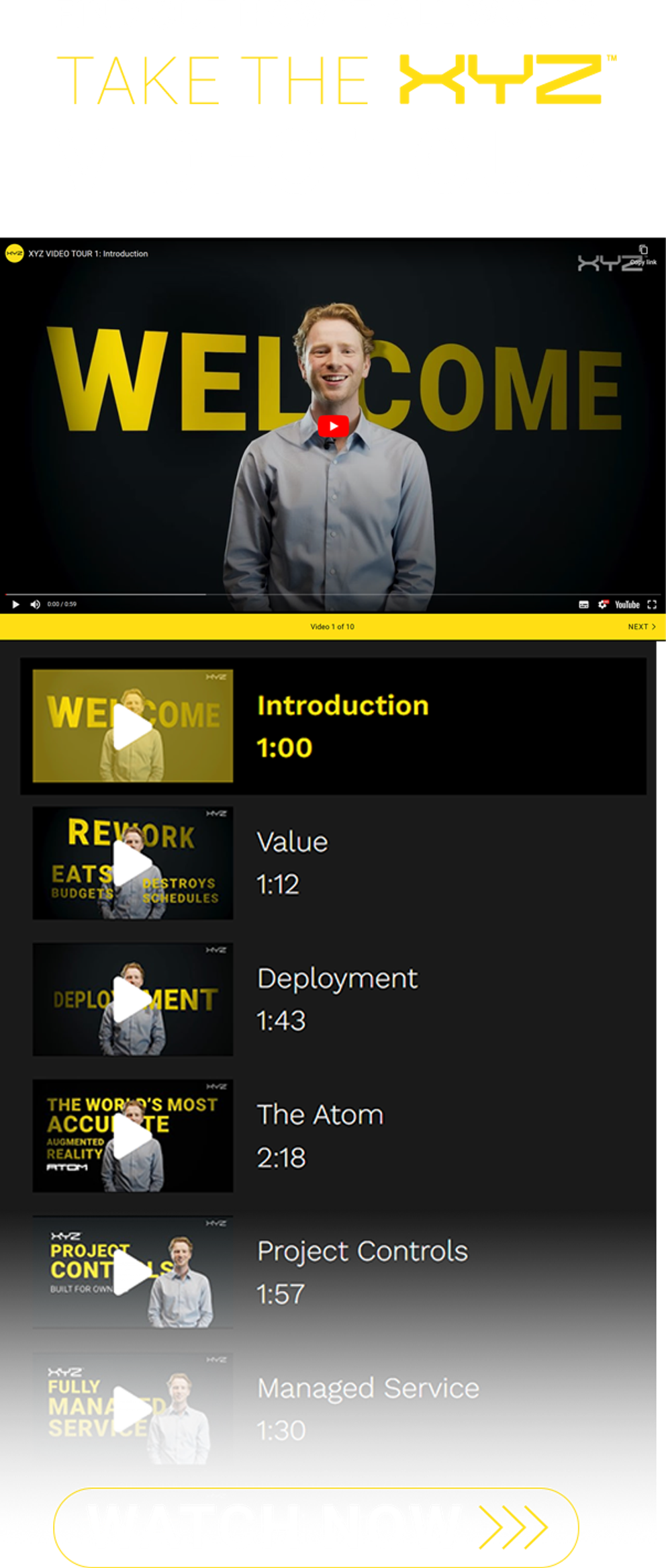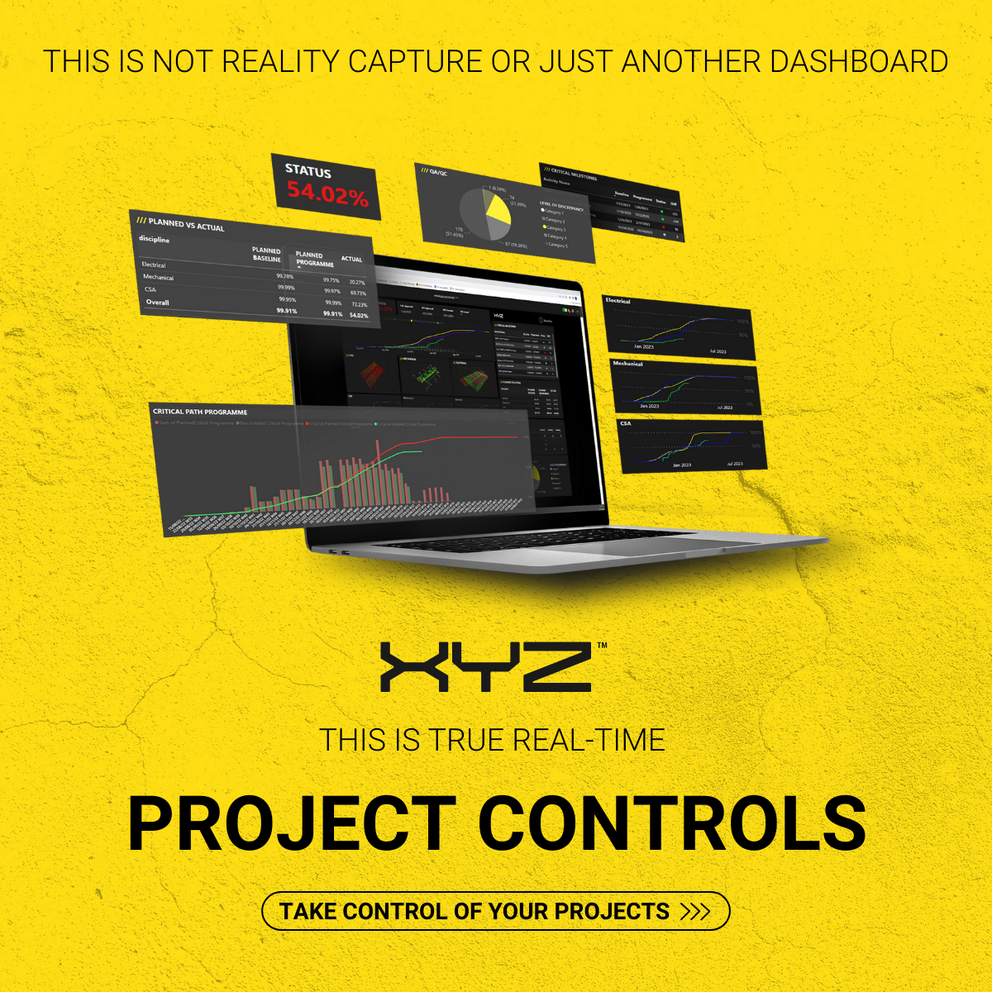-
Services
Services
Find out how we work with our clients and deliver value to construction projects from day one
-
Solutions
Solutions
Discover how all our solutions sync together to deliver construction's most powerful BIM platform to date
-
Built for
Built for
-
Industry
Industry
Understand how we support construction's biggest sectors, and hear from our clients who have experienced the power of XYZ
-
Resources
Resources
Get stuck into all our latest thought leadership, news, reports and industry leading content
-
Company
Company
Dive into what makes XYZ tick, unearth why construction is in our DNA and why we are world leaders in AR solutions

Insights
Exploring the Latest in BIM Technology for Retail Manufacturing Spaces in 2023

02 July 2023
Building information modeling (BIM) has found its place in many aspects of construction, ranging from clash detection and estimation to take-offs and prefabrication. In recent years, research has shown that BIM is quickly gaining traction for many construction processes, including mock-ups and project planning.
Part of the reason BIM is so widely loved is due to its unique ability to enhance the construction process, increasing efficiency and productivity. Let’s look at how BIM can be used to build manufacturing facilities.
Uses of BIM technology for retail manufacturing spaces
Let's shed some light on retail manufacturing spaces first. These are the spaces where the products we use on a day-to-day basis are designed and manufactured to be sold in retail stores. Examples include food processing plants, clothing factories, and electrical appliance manufacturing plants.
The complexity of building retail manufacturing spaces will, of course, depend on the purpose of the facility. For example, a food processing plant will require refrigeration and a water and waste management system. Similarly, a footwear or textile factory will have unique ventilation, plumbing, electricity, storage, and assembly needs.
Fortunately, technology like BIM, AR, and advanced project management tech makes it easier for teams to handle these demands. Here are a few trends set to revolutionize the sector:
1. Augmented Reality
Virtual and augmented reality are taking the stаge in construction. In retail manufacturing, AR will play a significant role in improving productivity and efficiency. With AR, you can make changes and adjustments on the spot, improving workflow and reducing errors.
The Atom™ headset from XYZ Reality is an excellent example of a state-of-the-art augmented reality device that can integrate with BIM models. Providing on-site accuracy to the millimeter, this device can speed up construction times and prevent rework. Here's what you can do with it:
- Manage Data: Wear the headset to get site-wide access to data. You can identify issues, assign them to the relevant teams, share issues visually with them, and update the workflows accordingly. With remote access, you can monitor and manage construction progress from anywhere worldwide.
- Mode Control: Don't want a 360-degree view? No worries. Switch to individual elements or specific layers to focus on what you want.
- Offline Access: You don't need an internet connection; the Atom headset also works offline. Once you have a connection again, you can sync the data to your repository.
In short, it’s safe, efficient, cutting-edge, and highly accurate. It’s just what you need for a successful construction process.
2. Integration of advanced project controls
While heightened accuracy and improved collaboration on the design is critical to adhering to the project timeline, so is identifying delays. Our AR solution helps teams to design and build proactively. To keep teams on track we also offer a project controls solution to help construction managers keep their teams on track. Here are some key features:
- Objective progress data: For too long, the construction team worked from subjective data and guesses when it came to project progress. Eliminate guesswork and rework with comprehensive, accurate, and objective data accessible to the entire team.
- Better foresight for better decisions: Project managers can link the project schedule to the components in the BIM model, allowing them to see which trade is responsible for installation and on which date. Managers can identify potential project delays weeks in advance, giving them time to allocate the right resources and adjust timelines.
Delays and rework are a major pain point for the construction sector – they can be costly and for a long time, there hasn’t been a way to overcome them. Fortunately, technology like XYZ’s proactive clash detection and resource planning provides a solution to unnecessary budget overruns and extended timelines.
3. Creating green, energy-efficient buildings
The rise of consumerism in the past century has led to detrimental effects on our environment. With this, many companies and corporations have made the shift towards cleaner energy practices. This includes manufacturing facilities.
Using BIM, construction teams can design and build energy-efficient buildings. AEC (architects, engineers and contractors) can work together using BIM technology to design and create a sustainable building that suits environmental and government building codes.
BIM not only assists in creating an energy-efficient building, but the technology also increases the efficiency of construction projects, eliminating unnecessary fuel use and wasted resources. With XYZ Reality’s augmented reality tools, teams get more insight into the details of their design, drastically reducing the time onsite and eliminating the waste of rework.
4. Modular Construction
Modular construction means producing pre-made parts of buildings and then assembling them on-site. Errors, however, could lead to costly rework due to the inconvenience of having to remake all the individual “building blocks”.
BIM helps avoid this by offering the ability to create detailed 3D models. Suppose you want to construct a plant to produce beverages. Instead of simply visualizing the building in 2D, you can have a virtual tour of the facility before construction even begins.
Once you're satisfied with the layout, you can use BIM to simulate different scenarios. These models will serve as the basis for prefabrication. The result? A more efficient construction process with timely deliveries and minimal rework.
5. Internet of Things
By 2030, we're forecasted to have 29.42 billion IoT devices worldwide. That shouldn't come as a surprise, considering the impact these devices have on productivity and efficiency.
The construction industry is no exception. IoT, coupled with BIM, can be a game-changer for construction in the retail manufacturing sector.
For instance, IoT devices can help capture real-time data from the construction site on the status of equipment and devices. It can aid in keeping track of construction vehicle fleets and making sure vehicles and equipment are ready for use.
This data consolidated in a single platform like XYZ BIM can then help construction managers and engineers improve their decision-making processes.
Incorporate technology into your retail manufacturing project
At the heart of every successful construction project is collaboration and proper planning. Without these, the project won’t get off the ground. One of the main reasons you can’t afford to skip planning and effective collaboration is due to rework.
Rework is a major issue in the construction industry, and it’s always costly and time-consuming. XYZ gives you the option to avoid rework and build proactively by helping you take your BIM model onsite and offering teams a cloud-powered project controls solution.
This never-before-seen pairing helps construction managers and contractors gain access to all the data they need for project success.
BIM, combined with XYZ’s AR technology and project controls, eliminates the guesswork from construction projects, allowing for better project planning, management, and collaboration. This never-before-seen pairing helps construction managers and contractors gain access to all the data they need for project success.
With XYZ Reality, high-quality, efficient construction has never been easier.
With XYZ’s tools, your team can collaborate with stakeholders, stay transparent, visualize real-time data on scheduling and designs, and manage issues — all on the same platform. Book a demo today to learn more.






